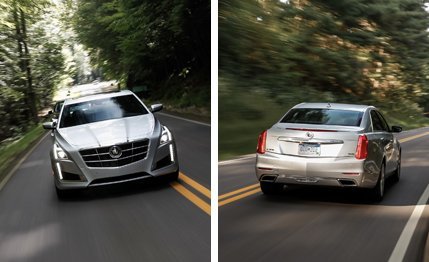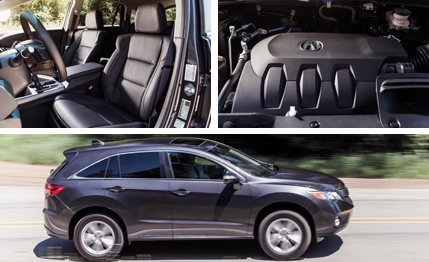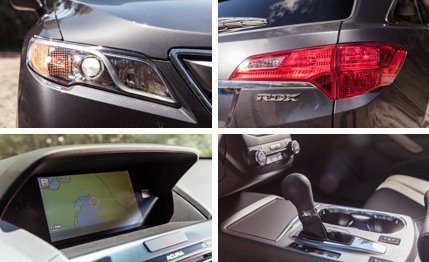
 Instrumented Test
TESTED
Instrumented Test
TESTED
There’s been a lot of griping—yup, including some from us—regarding the about-face Acura pulled with its second-gen RDX. With a willing turbocharged four-cylinder, a torque-vectoring rear differential, and typically sharp Acura responses, the first generation was the driver’s compact crossover. However, just as someone who brings up having kids on a first date tends not to get a second date, the RDX proved a little too intense for many shoppers, some of whom, uh, realized they, you know, forgot to let the dog back in and, well, it was nice meeting you, but Rover’s probably peeing on tires at the BMW dealership again and I really should go over there. Only 15,196 drivers bought RDXs in 2011, the first-gen trucklet’s last full year on the market. BMW sold nearly twice that many X3s in 2011.
So, for its second act, which debuted as a 2013 model, the RDX panders less to people who like to drive and more to Compact Crossover Buyer A. The turbo four is replaced by a naturally aspirated V-6, the Super Handling All-Wheel Drive is downgraded to a lighter, regular-handling all-wheel-drive setup (sans “Super Handling” torque vectoring), and, although the spec sheet includes adaptive dampers, the goal is clearly serenity rather than sportiness. The styling is more subdued now, but the overall package didn’t change much. There’s a smidge more leg and shoulder room front and rear, but total interior volume increases by only 2.1 cubic feet.


Dynamics? Nah…
As far as Compact Crossover Buyer A is concerned, then, the RDX should be a hit. Its strut front suspension and multilink rear lack the bite and confidence of the first-gen car but also lack its harsh ride, which should be worth a few thousand sales. And the electric steering, although not the precise setup of its hydraulic predecessor, is quick and nicely weighted. We doubt buyers will notice that skidpad grip has dropped from our best of 0.84 g in the first-gen vehicle to a perfectly pedestrian 0.79. The 70-mph-to-0 braking distance of 181 feet is on par with what we saw with the old RDX, but it’s significantly longer than what we’ve recently recorded from the likes of the Audi Q5 or Land Rover Evoque.
We’ll miss the turbocharged four, but the RDX’s 3.5-liter V-6 tops the four by 33 horsepower. It is 9 lb-ft shy of the four but gets a six-speed automatic instead of the outgoing car’s fiver. A cylinder-deactivation system that allows the six to run on four or three cylinders depending on load helps it clobber the four in official efficiency ratings—19 mpg city/27 highway versus 17/22—but our observed economy of 21 mpg was right in line with previous RDX tests. The new powertrain did a better job in straight-line testing, where we clocked the new car to 60 mph in 6.2 seconds and through the quarter-mile in 14.8 at 96 mph. Those are both improvements of 0.3 second, and quicker than many competitors.


Numbers Smaller and Larger
Acura’s big advantage over the rest of the cute-ute realm is in pricing. The RDX starts at $35,415. All-wheel drive adds $1400, and the Tech package, which bundles all the major extras—remote power hatch, rearview camera, upgraded audio and nav with real-time traffic and voice control—is $3700. Additional options are limited to nickel and dime accessories. Our Tech-equipped all-wheel-driver topped out at $40,515. The Evoque’s base price is higher than that.
The RDX is a thoroughly competent little machine, but we’re disappointed that it feels like just another compact crossover. Although not good for enthusiasts, that’s great for Acura. People buy a lot of compact crossovers, and the taming of this one is already paying off big time. In a segment that is enjoying rapid growth, the RDX is outpacing its competitors, nearly doubling its 2011 sales figure in 2012, when the new model went on sale, and already surpassing its 2012 total through just the first eight months of ’13. So maybe that identity shift wasn’t a bad idea after all.